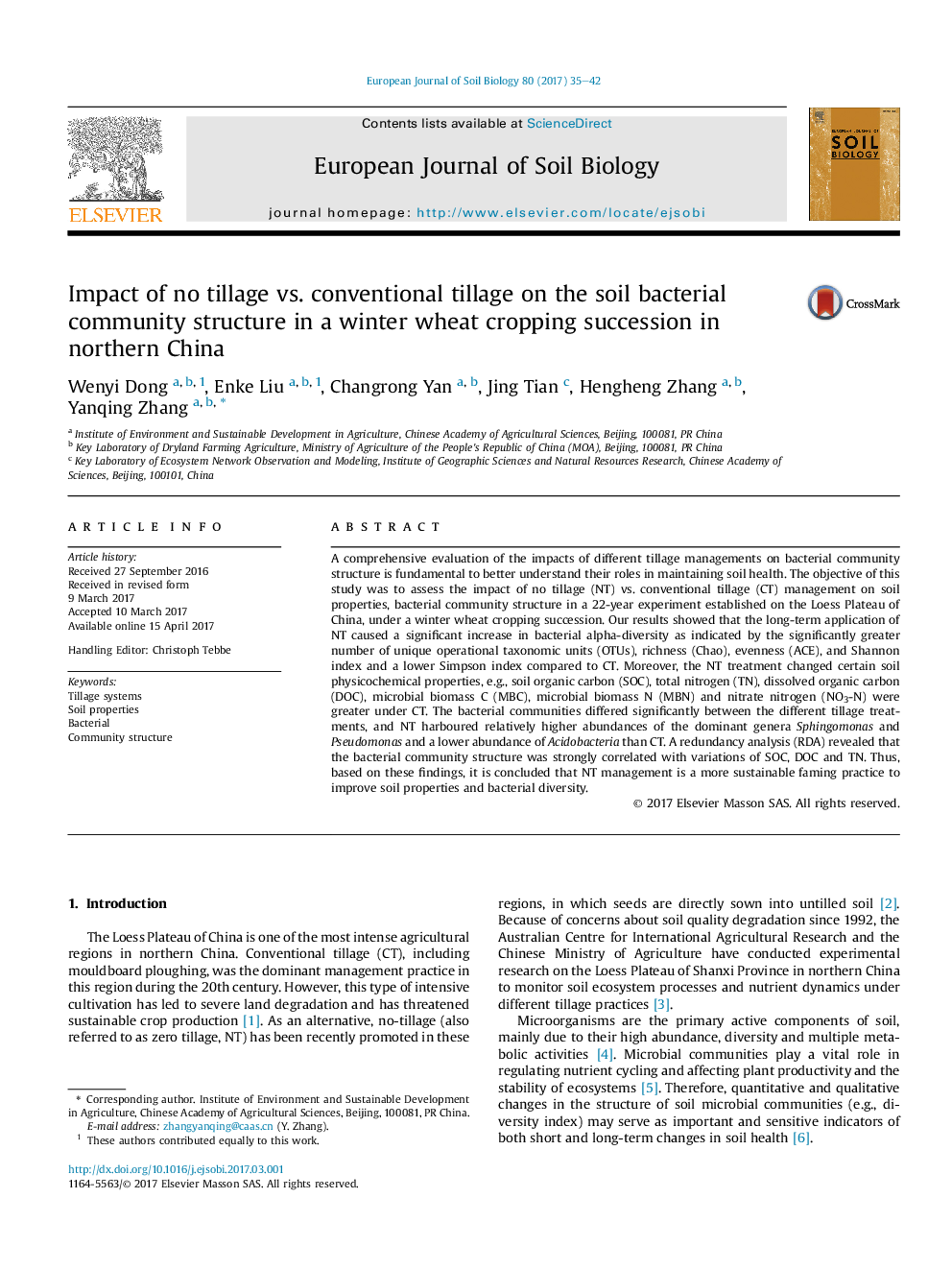| کد مقاله | کد نشریه | سال انتشار | مقاله انگلیسی | نسخه تمام متن |
|---|---|---|---|---|
| 5744216 | 1618112 | 2017 | 8 صفحه PDF | دانلود رایگان |
- No-till increased the bacterial diversity compared to conventional-till.
- Actinobacteria and Proteobacteria were the predominant taxonomic groups in no-till and conventional-till soils.
- No-till enhanced the abundances of the Sphingomonas and Pseudomonas genera.
- The abundances of Acidobacteria were lower in No-till than conventional-till.
- SOC, DOC and TN were the most three significant correlation factors in shaping the bacterial composition.
A comprehensive evaluation of the impacts of different tillage managements on bacterial community structure is fundamental to better understand their roles in maintaining soil health. The objective of this study was to assess the impact of no tillage (NT) vs. conventional tillage (CT) management on soil properties, bacterial community structure in a 22-year experiment established on the Loess Plateau of China, under a winter wheat cropping succession. Our results showed that the long-term application of NT caused a significant increase in bacterial alpha-diversity as indicated by the significantly greater number of unique operational taxonomic units (OTUs), richness (Chao), evenness (ACE), and Shannon index and a lower Simpson index compared to CT. Moreover, the NT treatment changed certain soil physicochemical properties, e.g., soil organic carbon (SOC), total nitrogen (TN), dissolved organic carbon (DOC), microbial biomass C (MBC), microbial biomass N (MBN) and nitrate nitrogen (NO3-N) were greater under CT. The bacterial communities differed significantly between the different tillage treatments, and NT harboured relatively higher abundances of the dominant genera Sphingomonas and Pseudomonas and a lower abundance of Acidobacteria than CT. A redundancy analysis (RDA) revealed that the bacterial community structure was strongly correlated with variations of SOC, DOC and TN. Thus, based on these findings, it is concluded that NT management is a more sustainable faming practice to improve soil properties and bacterial diversity.
Journal: European Journal of Soil Biology - Volume 80, MayâJune 2017, Pages 35-42
